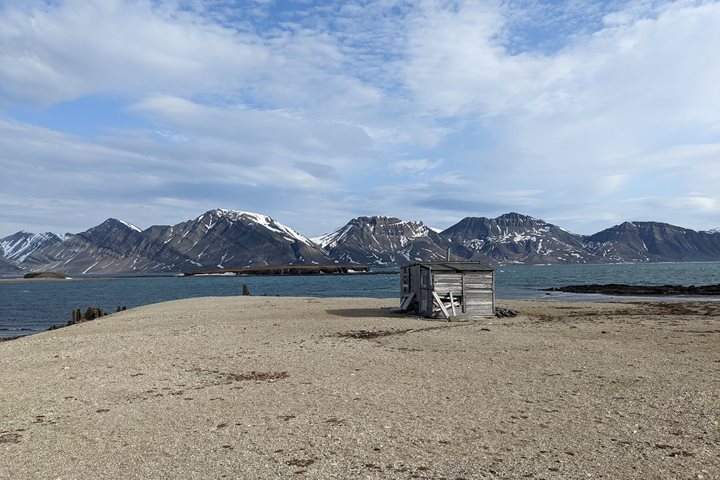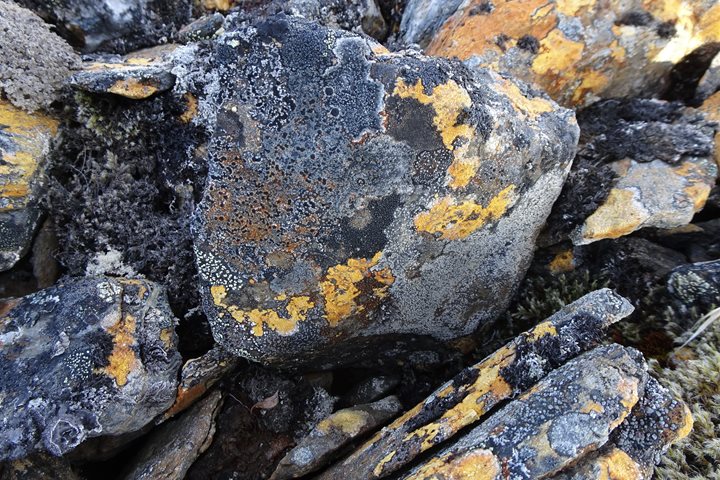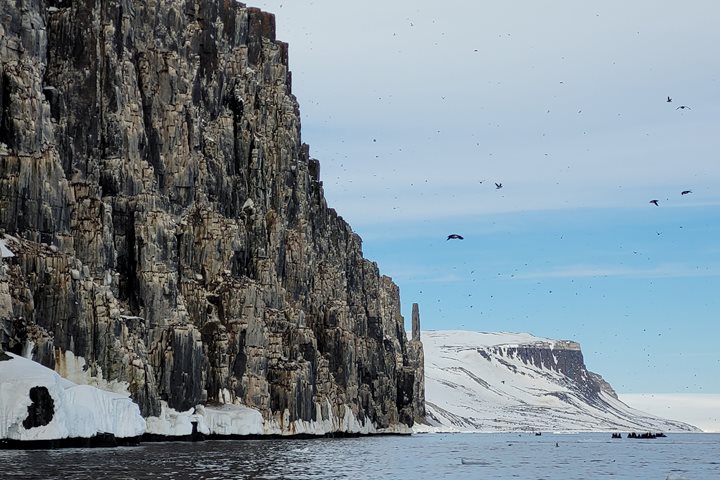Vestisen (noon position: N72o41/W011o02’)
We have now departed eastern Greenland and are working our way northeast for Svalbard. Between lies the famous Vestisen (Western Icefield) which is the out-push of dense and hard sea ice (multi-year ice) from the Arctic Ocean into the north Atlantic. The area is called Fram Strait, named after Nansen’s famous ship Fram, which was used for his ice drift expedition 1893 - 96 to confirm the existence of the deep frozen Arctic Ocean.
By midnight we started our transition through the heavy sea ice. It turned out to be very dense, and with thick fog we were forced to sail south to try to get around. By the morning most of us woke up in a different way, not our expedition leader’s wake-up call – instead it was the ship banging through heavy ice again. Now our captain was trying to push east and get through the ice field.
We are encountering much the same conditions as Norwegian sealers would have seen every spring from February to May, as they came here to catch the harp and hooded seals. The conditions the sealers had to deal with was often broken-up sea ice, mainly imbedded in fog. This is a major breeding area for both seal species. By breeding on the very edge in loose sea ice far out in the ocean they can avoid predation by polar bears.
Vestisen was known to be rewarding if you were successful with your seal catch but also very dangerous. If the area got hit by severe storms and small seal boats were deep inside the ice, many never made it back to mainland Norway. Last time this happened was in 1952 and in one single day, during an extremely severe storm on April 3rd, five sealer boats with 46 crew disappeared. Through the time period 1926 -1940, 101 sealer vessels were shipwrecked. After WWII, as new technology had been developed, the figure dropped to 29 from 1946 – 59. Still a dangerous adventure for providing your living.
Still, the drive for Norwegian sealers was great to go west from mainland Norway every spring. In 1965 it was 65 vessels hunting seals and the catch counted to 140 000 animals, which was regarded as poor!
From the 1850s to 1990s sailing from coastal Norwegian towns like Tromsø and Ålesund for catching seals was a major income for many families. Exact numbers of seals slaughtered will never be known but we can assume it’s in the millions. At first it was mainly the seal oil which was the reward, later it became the skins. Nowadays only a few state-subsidized ships sail west every spring, because of several anti-sealing campaigns. Brigitte Bardot, together with Paris Match and the Marine Mammal Protection Act 1972 in the U.S. very much put an end to the industry. It became unfashionable to have a seal coat!
This area also has a strong interest for World War II historians as it was used to provide the Soviets with military equipment from the Allies to maintain the Soviet forces to fight on the Eastern Front. About 40 major Arctic convoys sailed between Iceland to Murmansk or Archangel, or vice versa, during WW II. The cloudy and foggy conditions during summer made it hard for German air reconnaissance to keep track of the fleet and hiding inside the loose pack-ice was a way to escape the submarines constantly following and attacking the convoys.
By noon we had made thorough the Vestisen and at last were able to set our course north. Through the day we had several presentations and additionally our hotel manager with his galley crew served reindeer kebabs with a glass of red wine on the back deck.
After dinner Tom Ritchie kept us entertained with stories from the past. His career with adventure travel started way back with Lars-Erik Lindblad, onboard the little red ship Lindblad Explorer. Maybe every voyage creates one story and over the years many good stories have accumulated. For sure many of the current staff on board were mentioned.
Interestingly, as we now leave Greenland and continue to sail north for Svalbard, a remarkable American Arctic explorer turns up on the navigation chart for northern North Atlantic: Louise A. Boyd Bank (N72o40’/E003o00’). In 1960 she was the second woman ever to receive the Cullum Medal of the American Geographical Society and the first woman to be elected to their board.






